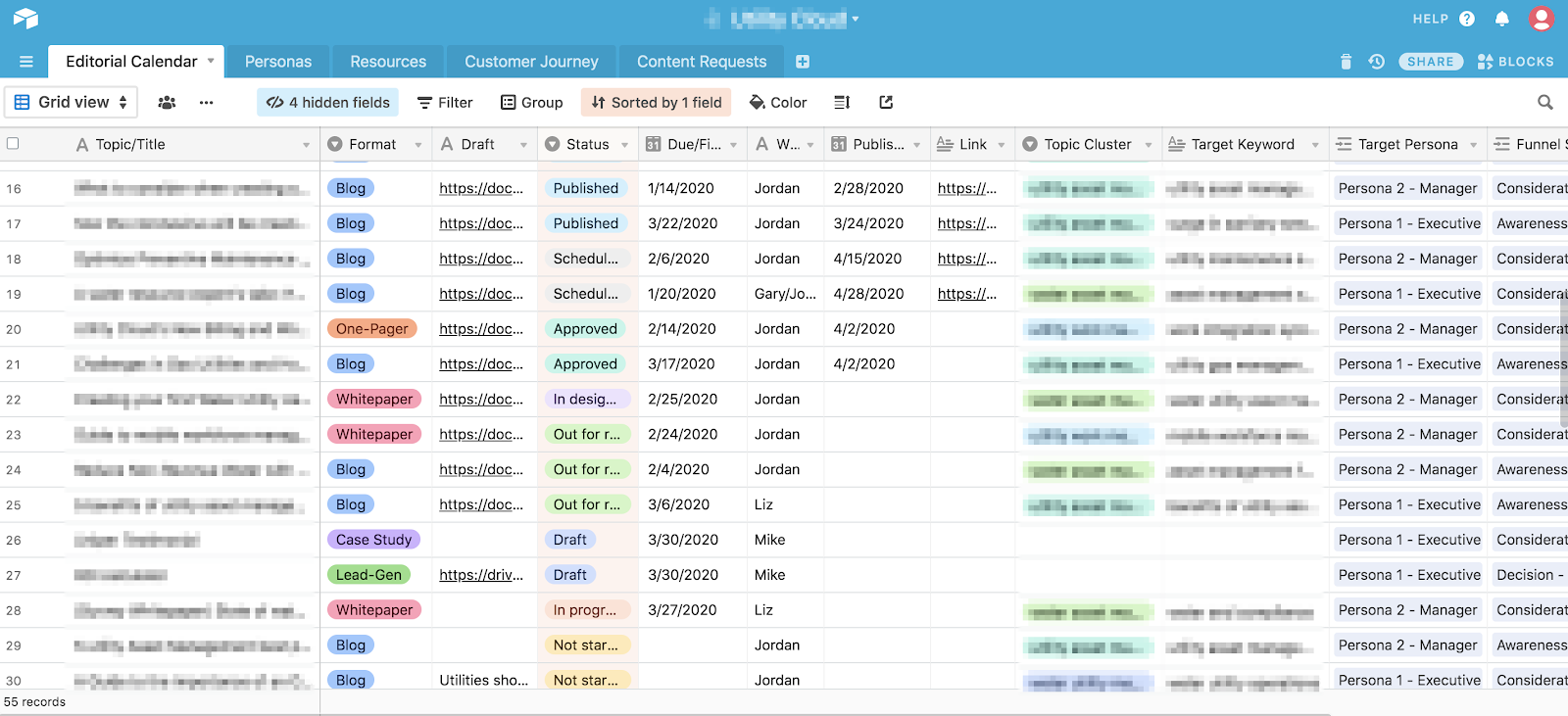A Guide to Building Your 2025 B2B SaaS Content Marketing Strategy
Discover how to build a results-driven B2B SaaS content marketing strategy for 2025. Learn actionable strategies to create content that converts.

B2B SaaS content marketing strategies are critical.
While many B2B SaaS marketing agencies may understand the importance of content marketing, many don’t know how to use it to scale their B2B SaaS business or understand how it affects their bottom line. Set your business up for long-term success with a holistic content marketing strategy so you can see real results.
What does your content marketing mean to you?
Your content marketing needs to build off the foundation of your go-to-market strategy. When it comes to your GTM strategy and how you use content to support it, you need to consider who your customers are, what your company value proposition is, and how your competitors are positioning themselves in the industry.
The purpose of a GTM strategy is to deliver your unique selling proposition to the right audience in a way that effectively differentiates you from your competitors, otherwise, your market strategy will fail. The same goes for your content, which is why you need a content strategy.
But I thought I just needed a content calendar.
Do you really have a solid plan if you just have a content calendar? Many people believe they’re the same thing, but a marketing plan, a content strategy, and an editorial calendar are all different.
A content or editorial calendar outlines the status and plan for your content. It’s essentially a schedule that helps you organize your upcoming content by detailing what you will post, when you will post, and any other details about it.
Content strategies allow you to create content with a purpose. It takes into account the creation, distribution, process for content. Most important, it allows you to map your content to your target audience, as well as tie it to a funnel stage and CTA.
Content marketing strategies save you the headache of coming up with a topic right before it’s time to publish your next post.
Your B2B SaaS content marketing strategy boils down to figuring out what content will help your target audience and inspire them to take actions that boost your business. This requires researching your audience, setting goals for your content, identifying gaps, studying your competition, and aligning with the overall marketing strategy.
According to the Content Marketing Institute’s 2020 report, 69% of successful B2B marketers have a documented content strategy. However, 16% of the least successful marketers also have one. This is why you need a holistic cross-channel content marketing strategy, so you can build content with intention and purpose and be successful at it.
While B2B SaaS marketers may realize the significance of content marketing, some may find themselves in a tight spot when it comes to justifying their efforts and demonstrating a good ROI.
This is because creating content involves a lot more than just writing something and publishing it and sending it out––it needs to be valuable and you need to move your customer’s down the funnel. Establishing a comprehensive and holistic content marketing strategy will allow you to build trust, keep prospective clients engaged, help qualify leads, improve brand awareness and evoke a sense of thought leadership.
The truth is, holistic content strategies include more than just content. In fact, there are several things you should include in a holistic B2B SaaS content marketing strategy.
Thinking about your content holistically means creating a complete cross-channel content marketing strategy with all of the pieces to the puzzle.
When it comes to B2B SaaS content marketing, it’s crucial to provide your audience with information, both about the industry and about your product. Start off your content marketing journey by honing in on your GTM strategy and value proposition so you can nail the message you want to deliver.
Learn more about why crafting your messaging upfront is vital to your growing company.
As you establish your holistic content marketing strategy using the detailed list above, you also need to focus on aligning each piece of content to a goal.
Below are some examples of a few goals and metrics you can tie your content to.
|
Goals |
Metrics |
|
Create or increase brand awareness |
Site Traffic, Rankings, Links |
|
Educate and engage audience |
Blog Traffic, Time on Page, Top Pages, Bounce Rate, Likes, Shares |
|
Build trust and nurture customers |
Return Visits, Links, Content Downloads |
|
Generate leads |
Content Downloads, Sign-Ups, Conversion Rate |
Don’t forget, your content should also be tied to your personas, positioning, value proposition, SEO, and more for a holistic content marketing strategy.
You should know by now that your content calendar is just a part of your content strategy. Content calendars, also called editorial calendars, are great for keeping track of and mapping out your content. Here are the fields to include in your editorial calendar:
In other words, your content calendar will be the sole resource for all content creation. Therefore, every step and every piece of the puzzle needs to be documented so you can execute a solid content marketing strategy.
I like to use Airtable, a cloud collaboration spreadsheet for this. Not only is it easy to use, but it gives you a great visual and organized look to your content so you can clearly see every step.
Here’s an example of what your content calendar might look like.

Keep in mind that you cannot see all of the sections here. If you are managing multiple clients, their content calendars might look a little different based on their goals and that is okay. As long as you have everything you need to execute a solid holistic content strategy and distribute killer content when needed, it shouldn’t matter what your calendar looks like.
As I mentioned above, your content will ultimately depend on the overall marketing strategy. For example, you need to consider where you are at, what your focus is, and what your next move will be.
Use the SEO research and topic clusters as a guide to create good, visible content at every stage of the funnel. In this case, content will have a main pillar piece linked to the cluster content pieces with various targeted keywords on that topic. This would include something like a landing page for a main pillar piece and then multiple blog posts, checklists, white papers, webinars etc. to support and expand on it and create that informational hierarchy.
A solid content calendar can do wonders for growing your blog and website, producing top-quality content, and distributing it successfully.
But where do I get content ideas?
Always make sure you are creating content that supports your overall marketing efforts. For a more tactful content marketing strategy, you should generate your content ideas based off of the SEO research instead of matching content ideas to the SEO strategy later.
Which types of content do I create?
The type of content you create depends on how you want to deliver the content to your audience, which means it relies heavily on your audience personas and figuring out how they prefer to consume content. This also requires a little thought from you on how you think your content will best serve them during each stage of the funnel.
Whether you’re writing up a case study, creating an eBook, drafting up a whitepaper, sending out a survey, writing a how-to guide etc., make sure it has a purpose for your audience and aligns with your strategy.
Other types of B2B content include but are not limited to webinars, landing pages, emails, press releases, infographics, videos and more.
Your content needs to do more than just sit on your website. Consider how you are executing your plan.
A part of executing your plan is not only developing a content process, but also a plan for promoting your content. You can promote your content via outbound messaging, email newsletters, PPC campaigns, as well as social media like LinkedIn, Twitter and Facebook.
The next and final step to your content marketing is to measure the success. This provides you with good, solid data so you can make your case for implementing a solid B2B SaaS content marketing plan at your company.
No matter what type of content you are creating, it should be informational, as most B2B SaaS companies are designed for the purpose of providing information and assistance. That being said, a B2B SaaS content marketer should be able to provide information that leads to the main source of information – the SaaS product itself.
I hope I’ve made it clear that a content calendar and a content marketing strategy are two different things. Creating content is fun, but in order to do it properly, you won’t get away with an ad-hoc, on-the-fly approach. A content calendar simply cannot replace a well thought-out content marketing strategy, especially in the B2B SaaS space.
Understanding the purpose of your content strategy and your content calendar will help you move in the right direction and create content that drives results for your B2B SaaS business, because brainstorming a couple of ideas on the day you’re planning to write your next blog post simply isn’t going to cut it.
The key to success in content marketing lies in aligning your every piece of content with your overall marketing strategy, as well as creating a solid plan, in which you would need a detailed and itemized content calendar.
Is your content marketing meeting your goals? Is it paying off? Are you measuring the ROI of your content correctly? More importantly, are you measuring the right content marketing metrics?
Fadi co-founded Kalungi in 2018 with Stijn Hendrikse. He has over 20 years of experience in marketing and building businesses. He is a certified HubSpot Champion User.
Discover how to build a results-driven B2B SaaS content marketing strategy for 2025. Learn actionable strategies to create content that converts.
Wow, How and Now. 3 key types of content that will ensure a balanced content marketing strategy that can scale and does not grow stale.
B2B content marketing has proven to be highly effective in growing SaaS businesses. Learn how companies successfully create and implement a strategy.
Be the first to know about new B2B SaaS Marketing insights to build or refine your marketing function with the tools and knowledge of today’s industry.